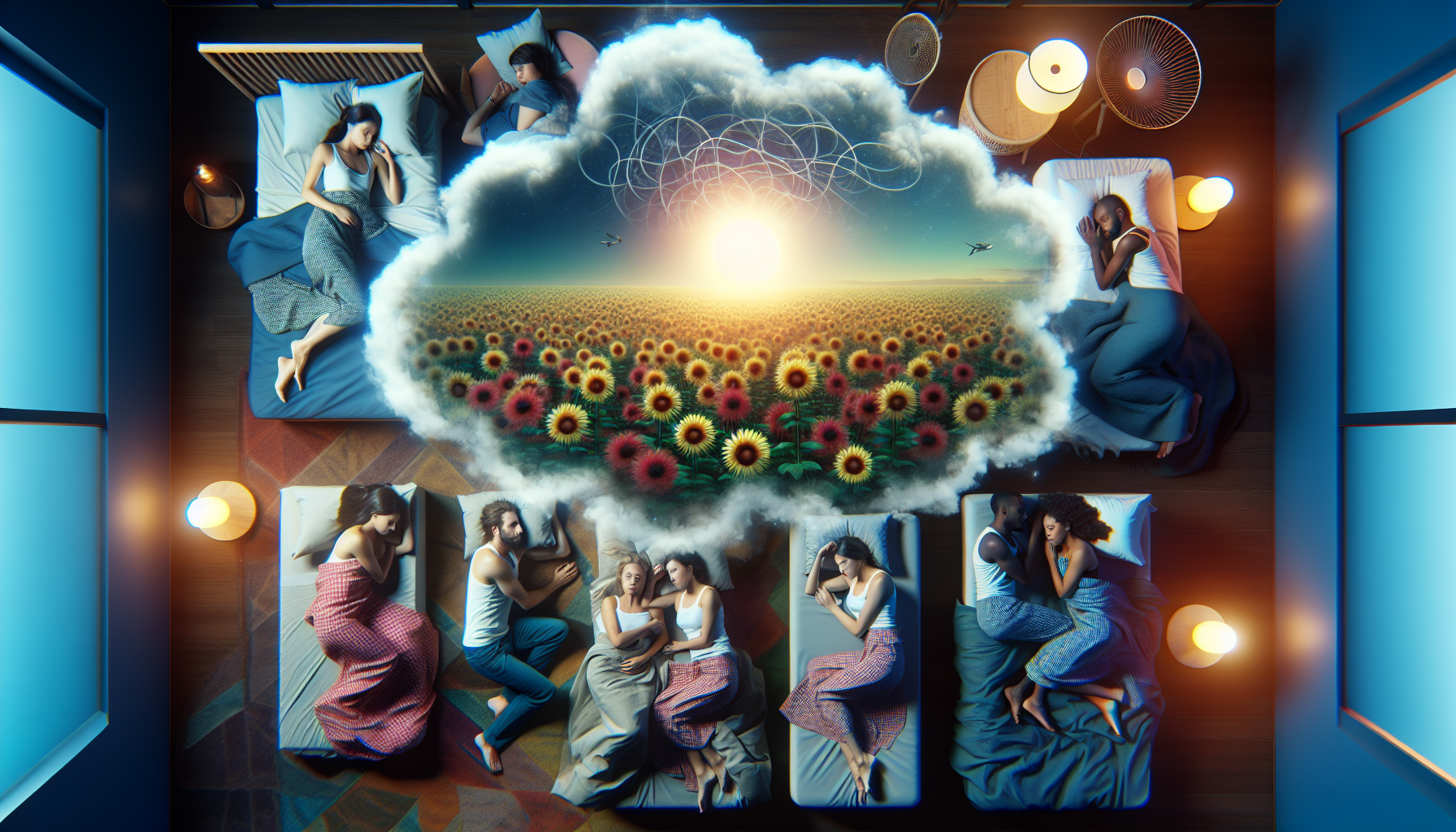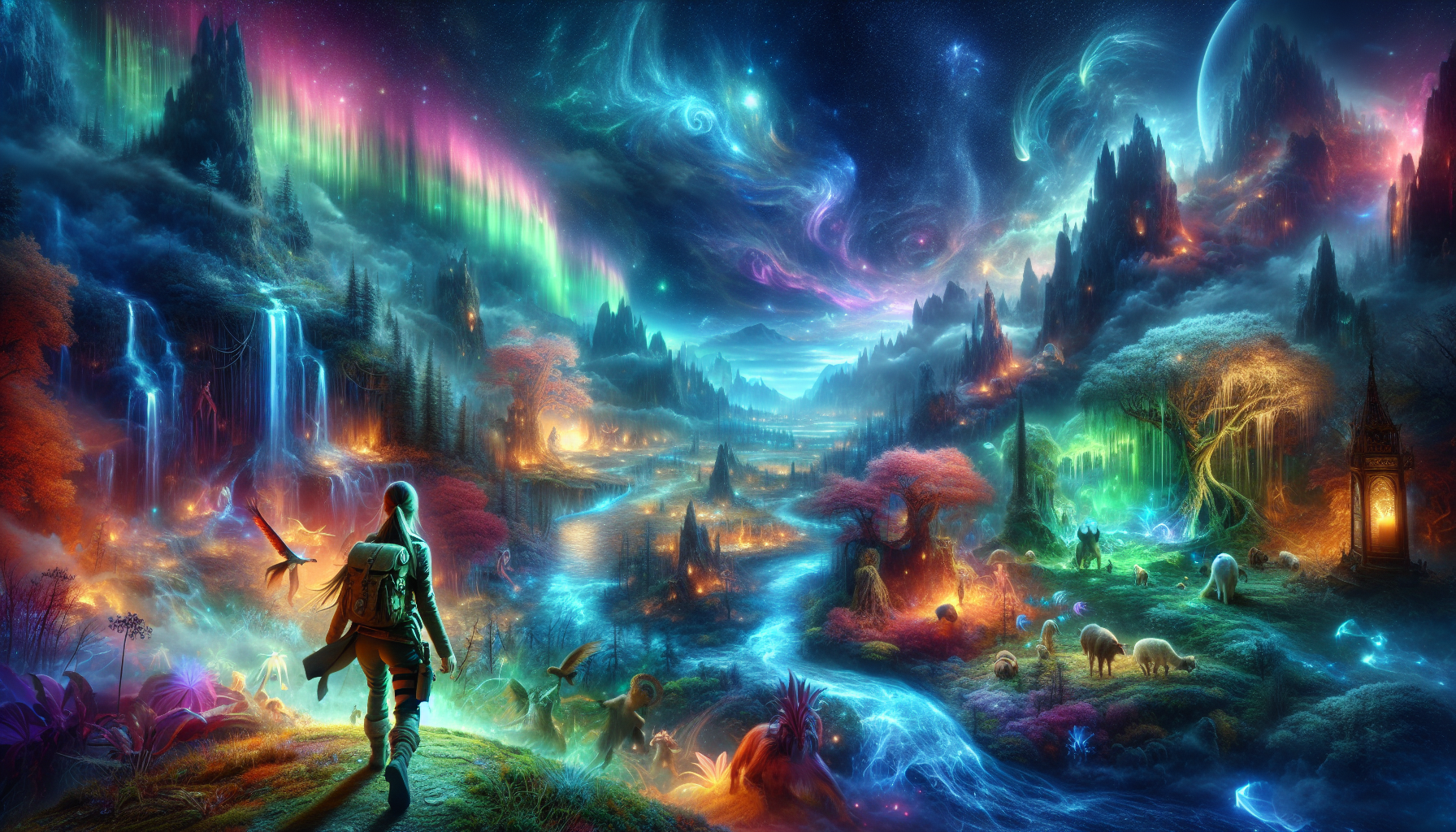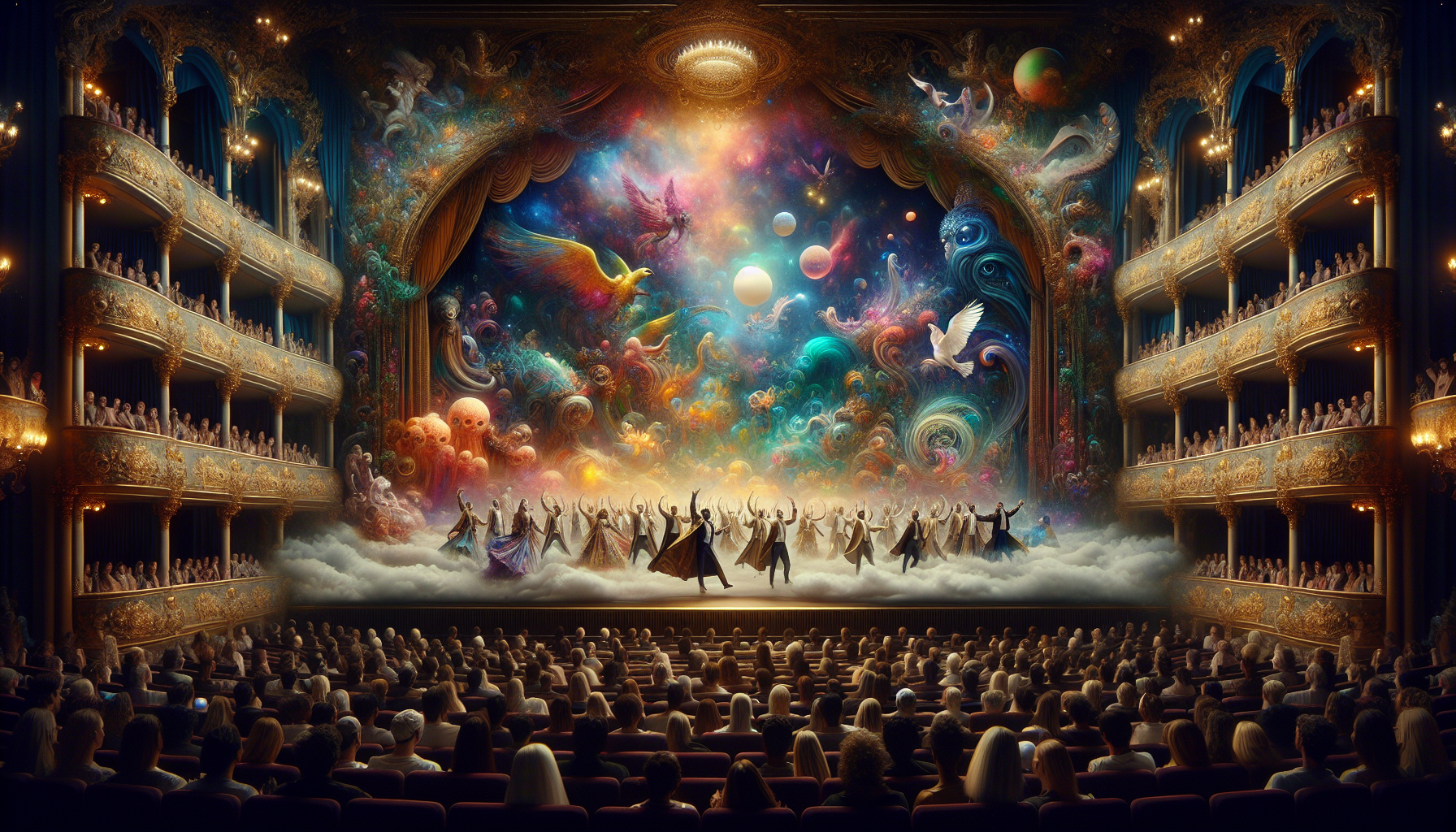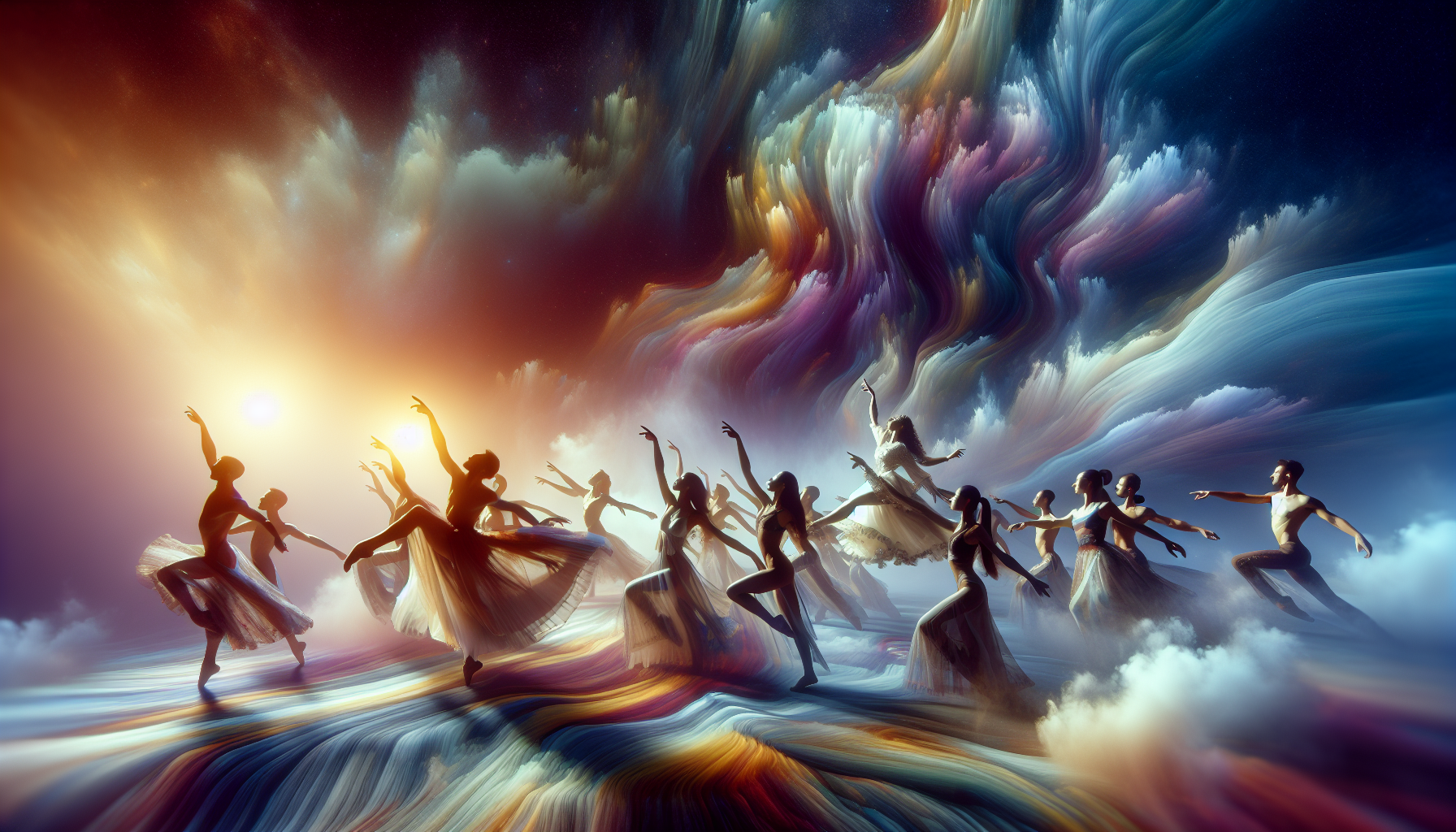In the hushed moments of dawn, as the world lies in the delicate balance between sleep and wakefulness, a mysterious phenomenon stirs in the minds of many. Imagine waking up from a dream so vivid and profound that it lingers in your consciousness, only to discover that someone else—perhaps a friend, family member, or even a stranger—experienced the exact same dream. The enigma of multiple people dreaming about the same event has puzzled scientists, intrigued psychologists, and fascinated dreamers for centuries. This shared dreaming phenomenon, often seen as a mystical bridge between the subconscious minds of individuals, beckons us to explore its depths. 🌌
In this journey through the realm of shared dreams, we will unravel the layers of this captivating occurrence. We begin by diving into historical accounts and cultural beliefs surrounding shared dreams, examining how ancient civilizations interpreted these collective experiences. As we progress, the article will illuminate the latest scientific research that seeks to explain this phenomenon through the lenses of psychology and neuroscience. We will delve into the potential mechanisms that could allow for such dream synchronicity, including the role of shared experiences and emotional connections. Furthermore, we will explore the implications of shared dreams on our understanding of human consciousness and the profound connections that link us all.
Join us as we navigate the intricate web of shared dreaming, uncovering stories that blur the line between coincidence and the extraordinary. From tales of prophetic dreams that transcended time and space to the modern-day experiences of individuals who find solace and awe in their shared nocturnal narratives, this exploration promises to challenge your perceptions and ignite your imagination. Whether you approach this topic with skepticism or wonder, the phenomenon of shared dreams invites us all to ponder the limitless potential of our minds and the unseen threads that unite us. 🌠
Understanding the Shared Dream Phenomenon
Dreams have always fascinated humanity, serving as windows into the subconscious mind and reflecting our deepest fears, desires, and experiences. However, when multiple people report having the same or similar dreams, it gives rise to the intriguing concept of shared dreams. This phenomenon has sparked curiosity and debate among psychologists, neurologists, and cultural historians alike. But what exactly constitutes a shared dream, and how can we explain this mysterious occurrence?
Shared dreams are often defined as a scenario where two or more individuals experience the same or remarkably similar dreams. These dreams may occur on the same night or over a series of nights. The intriguing aspect is that individuals involved usually have no conscious knowledge of each other’s dreams until they discuss them afterward. The notion of shared dreams challenges our understanding of the individual nature of dreams and suggests a possible collective dimension to dreaming.
To further comprehend shared dreams, it is essential to delve into the mechanisms of dreaming itself. Dreams occur during the rapid eye movement (REM) stage of sleep, characterized by heightened brain activity and vivid imagery. Theories suggest that dreams serve various purposes, from emotional processing to memory consolidation. However, the precise function of dreaming remains a mystery. Shared dreams, in particular, raise questions about the potential for shared consciousness or telepathic communication during sleep.
Theories Explaining Shared Dreams
Several theories attempt to explain the occurrence of shared dreams, ranging from scientific to metaphysical perspectives. One scientific hypothesis suggests that shared dreams may arise from shared experiences or environmental factors. For instance, individuals exposed to similar media, environments, or stressors may process these stimuli similarly in their dreams. This theory underscores the impact of external influences on our subconscious mind.
On the other hand, some researchers propose that shared dreams might result from a form of telepathic communication. While the concept of telepathy remains controversial and lacks empirical evidence, anecdotal accounts of shared dreams often involve strong emotional connections between the individuals involved. This connection might facilitate a form of subconscious communication during sleep.
Another perspective considers the role of the collective unconscious, a concept introduced by Carl Jung. According to Jung, the collective unconscious is a reservoir of shared memories and archetypes inherited from our ancestors. Shared dreams could potentially tap into this collective unconscious, allowing individuals to access universal symbols and themes in their dreams. While this theory remains speculative, it offers a fascinating lens through which to view shared dreams.
Case Studies and Historical Accounts
Throughout history, there have been numerous accounts of shared dreams, often recorded in cultural and religious texts. One famous example involves the dreams of the Iroquois people, an indigenous group in North America. The Iroquois believed that dreams held significant spiritual and communal importance, and shared dreams were often seen as messages from the divine or ancestors. This cultural perspective highlights the role of shared dreams in communal identity and spirituality.
In more recent times, shared dreams have been reported in various settings, including among family members, friends, and even strangers. A notable case involved a group of soldiers during World War II who reported having eerily similar dreams about a battlefield incident before it occurred. Such accounts have fueled interest in the potential predictive nature of shared dreams, although scientific validation remains elusive.
Modern technology has also facilitated the documentation of shared dreams. Online forums and social media platforms allow individuals to share their dream experiences, leading to the discovery of common themes and symbols. These platforms provide a contemporary space for the exploration of shared dreams, fostering a sense of community among those who experience this phenomenon.
Comparing Shared and Individual Dreams
To better understand the nuances of shared dreams, it’s helpful to compare them to individual dreams. Here is a comparative table highlighting the differences and similarities:
| Aspect | Individual Dreams | Shared Dreams |
|---|---|---|
| Experience | Unique to the individual | Similar among multiple individuals |
| Influences | Personal experiences and emotions | Shared experiences, emotions, or external factors |
| Frequency | Common | Rare |
| Conscious Awareness | Limited to the dreamer | Discovered through discussion |
By comparing these aspects, we can appreciate the unique features of shared dreams and their potential implications for understanding the human psyche.
The Role of Technology in Exploring Shared Dreams
In the digital age, technology plays a pivotal role in the exploration and documentation of shared dreams. With the advent of online communities and platforms dedicated to dream sharing, individuals from across the globe can connect and compare their dream experiences. Websites and forums dedicated to dream analysis provide a space for individuals to share their stories and discover shared themes and symbols, thereby contributing to a collective understanding of the phenomenon.
Social media platforms, such as Reddit and Facebook, host groups and threads where people can post their dreams and engage in discussions with others who have had similar experiences. These platforms not only serve as a repository for shared dream accounts but also facilitate the formation of communities centered around the exploration of dreams. This communal aspect of technology echoes the historical significance of shared dreams in fostering a sense of collective identity and understanding.
Moreover, advancements in neuroscience and technology offer new avenues for studying the mechanics of dreaming and potentially unlocking the secrets of shared dreams. Technologies like functional magnetic resonance imaging (fMRI) and electroencephalography (EEG) allow researchers to study brain activity during sleep, providing insights into the neurological processes involved in dreaming. While current technology has yet to provide a definitive explanation for shared dreams, it holds promise for future discoveries in this intriguing field.
Video Resources and Further Exploration
For those interested in delving deeper into the topic of shared dreams, there are numerous video resources available online that explore various aspects of this phenomenon. One particularly insightful video is titled “Shared Dreams: A Window into the Collective Unconscious?” from the “Dreams Explained” channel. This video provides an engaging overview of the theories and accounts related to shared dreams, and I encourage you to give it a watch.
As you explore these resources, consider the broader implications of shared dreams for our understanding of consciousness and the interconnectedness of human experiences. The study of shared dreams not only offers a glimpse into the mysterious world of dreaming but also invites us to contemplate the potential for shared consciousness and the ways in which our dreams connect us to one another.
Practical Tips for Documenting and Analyzing Shared Dreams
For those who experience shared dreams or are interested in exploring this phenomenon further, documenting and analyzing dreams can provide valuable insights. Keeping a dream journal is an effective way to record your dreams and identify patterns or themes. By writing down your dreams immediately upon waking, you can capture the details and emotions associated with the experience, which may fade over time.
- Keep a journal by your bedside to jot down dreams as soon as you wake up.
- Record not only the events of the dream but also the emotions and sensations you experienced.
- Look for recurring themes, symbols, or people in your dreams over time.
Analyzing your dreams can be a personal journey of self-discovery, but it can also provide clues about shared experiences or influences. If you suspect you have experienced a shared dream, discussing it with others who may have had similar dreams can offer additional insights and foster a sense of connection. Online communities dedicated to dream analysis can also be valuable resources for sharing and comparing dreams with a broader audience.
By actively engaging in the documentation and analysis of dreams, individuals can gain a deeper understanding of their subconscious mind and the potential connections between their dreams and those of others. Whether through personal reflection or communal exploration, the study of shared dreams invites us to consider the profound ways in which our dreams shape our perceptions of reality and our connections with others.

Conclusion
Unlocking the Power of Shared Dreams: The Fascinating Phenomenon of Multiple People Dreaming About the Same Event
In exploring the compelling phenomenon of shared dreams, we have traversed a rich tapestry of psychological, neurological, and cultural narratives. At the heart of this exploration lies the intriguing question: how and why do multiple people experience the same dream content? This article has delved into various aspects, from the scientific underpinnings of dreaming to the socio-cultural impact of shared dreams, presenting a multifaceted perspective on this mysterious occurrence.
We began by examining the scientific foundations of dreaming, noting that dreams are a product of complex brain processes that occur during the REM (Rapid Eye Movement) stage of sleep. Neurologically, dreaming involves the activation of different brain regions, which are responsible for memory, emotion, and sensory processing. Despite the advancements in neuroscience, the precise mechanisms behind why dreams occur, and more importantly, why they sometimes manifest similarly across different individuals, remain elusive.
The discussion then shifted to the psychological theories that attempt to explain shared dreams. Carl Jung’s concept of the collective unconscious suggests that we all share a pool of archetypal images and symbols. This shared repository could potentially explain why people from different backgrounds sometimes dream about similar scenarios. Furthermore, the role of synchronicity—meaningful coincidences that occur without causal connection—was highlighted as a possible factor in shared dreams.
Culturally, shared dreams have been documented across various societies and time periods. Many indigenous cultures regard dreams as portals to other dimensions or as messages from the spiritual realm. Such perspectives underscore the significance of dreams as not only personal experiences but also collective phenomena that can influence community dynamics. The cultural lens provides a rich context for understanding how shared dreams can reinforce social bonds and shared identities.
The potential implications of shared dreams extend beyond mere curiosity. They offer a glimpse into the interconnectedness of human consciousness and the possibility of shared cognitive and emotional experiences. This interconnectedness can foster empathy and understanding among individuals and communities, highlighting our common humanity.
The phenomenon of shared dreams also raises intriguing questions about the nature of reality and consciousness. It challenges us to reconsider the boundaries between individual and collective experiences and to explore the possibility that our thoughts and emotions are more interconnected than traditionally believed.
Given the profound implications of shared dreams, further research is essential. We encourage scholars from diverse disciplines—neuroscience, psychology, anthropology, and beyond—to collaborate in unraveling this enigmatic phenomenon. By doing so, we can deepen our understanding of the human mind and its capabilities.
As we conclude this exploration, it’s important to reflect on the broader significance of dreams in our lives. Dreams, whether shared or individual, are a testament to the creativity and complexity of the human mind. They provide insights into our deepest fears, desires, and emotions, serving as a valuable tool for self-reflection and personal growth.
We invite you, the reader, to consider your own experiences with dreams. Have you ever shared a dream with someone else? What insights or connections did it reveal? We encourage you to share your thoughts and experiences in the comments below. Your stories contribute to a greater understanding of this fascinating phenomenon and help build a community of shared curiosity and exploration.
Furthermore, if this topic resonated with you, we encourage you to share this article with others. By spreading awareness about the power of shared dreams, we can inspire more people to explore the mysteries of their own minds and foster a deeper appreciation for the interconnected nature of human consciousness. 🌟
In closing, remember that dreams are not merely figments of our imagination but gateways to a richer understanding of ourselves and the world around us. As you continue to explore the landscape of your dreams, embrace the wonder and possibility they represent. Let them inspire you to connect with others, explore new ideas, and unlock the potential of the shared human experience. Together, we can unlock the mysteries of our minds and discover the profound power of shared dreams. 🌌
[Links for further exploration]
– National Sleep Foundation: https://www.thensf.org
– American Psychological Association:
– Scientific American article on dreams: https://www.scientificamerican.com/article/the-science-of-dreams/
Gabriel is a visual storyteller and dream archivist whose work explores the fragile boundary between memory and imagination. Through layered visuals and symbolic design, Gabriel captures the fleeting essence of dreams — those strange, beautiful, and sometimes haunting fragments that drift through sleep and linger in waking thought.
His creative journey is rooted in a deep fascination with the subconscious and the imagery it conjures. From half-remembered landscapes to recurring symbols and surreal encounters, each piece Gabriel brings to life becomes a portal into the inner archive — where time distorts, meanings shift, and personal mythology takes form.
With a background in handcrafted artistry and visual composition, Gabriel merges intuition with intention. His work doesn’t merely depict dreams; it preserves them, translating ephemeral moments into tangible expressions that evoke emotion, curiosity, and quiet revelation. Each visual is both a record and an invitation to explore the rich terrain of inner life.
Through illustrated dream journals, symbolic studies, and visual essays, Gabriel invites others to connect with the poetic architecture of their subconscious landscapes. His art becomes a mirror — not only of what we see at night, but of what we carry deep within.
His work is a tribute to:
-
The fragile beauty of forgotten dreams
-
The language of symbols in the subconscious mind
-
The inner worlds we visit but rarely name
Whether you’re a lucid dreamer, a seeker of hidden meanings, or someone fascinated by the mystery of sleep-born stories, Gabriel welcomes you to step into a space where dreams are not lost — they are archived, one vision, one sketch, one silent narrative at a time.





